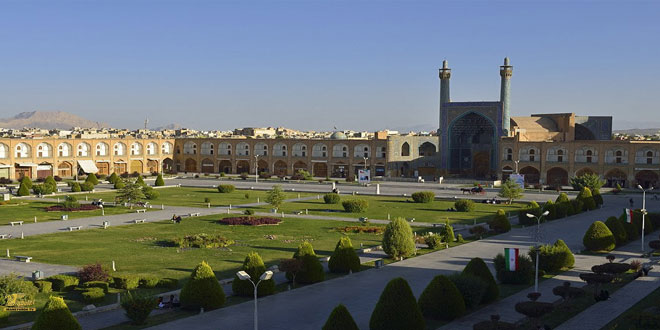Iran aims to increase visitors to 20million by 2025, which it’s hoped will add £20billion to the economy
Number of hotels built in past year more than the total built in last century – and huge developments are coming
Rotana, Accor, Melia and Jumeirah hotels have all signal their commitment and have unveiled some grand designs
With sanctions lifted over country’s nuclear transparency officials hope tourism industry can be re-invigorated
By JOHN HUTCHINSON FOR MAILONLINE–
Backing up its aim to be one of the must-visit destinations for 2016, Iran is set to construct 125 luxury hotels.
With the government’s tourism arm aiming to increase visitors to the Middle Eastern country to 20 million by 2025, a 20 fold increase, hopes are that it can contribute £20billion to the economy.
Masoud Soltanifar, the head of Iran’s Cultural Heritage, Handicrafts and Tourism Organization, confirmed that many of the hotels are near to completion, and the numbers built in the last year are more than the total produced in the last century.
With nods to the country’s history throughout, Iran’s government will be hoping the Espinas Palace will help re-invigorate the tourism industry
It is hoped that the removal of sanctions against Iran in light of its progression over its nuclear case can provide a positive outlook to its tourism industry.
Accor, which is Europe’s largest hotel group, has already constructed two four-star hotels at Imam Khomeini International Airport outside the Iranian capital.
And Rotana are set to open four hotels in the next two years, two in the city of Mashhad set to be completed by the end of 2017, and two in Tehran due to open in 2018.
Amin Dakkak, corporate director of marketing & communications told MailOnline Travel: ‘Rotana was the first hotel management company to announce its expansion plans in the Iranian market, after signing the management agreement in March 2013 for four properties currently under development, all of which will be opened under the company’s alcohol-free brand “Rayhaan Hotels & Resorts” by Rotana.
Rotana’s first two hotels are set to open in the city of Mashhad – including this 362 room hotel in 2017. A 275 room hotel will follow in 2018
The Shaw or Imam Mosque in Imam Square, Esfahan, has retained its spiritual beauty over the years. The country’s architecture has been acclaimed far and wide
Meidan-e Emam square with Sheikh Lotfallah Mosque in the background
About half were Shiite Muslims, the same religious denomination as most Iranians, and the other half were tourists from Europe, North America and east Asia.
‘In the post-sanctions era, tourism is an industry that will get a boost more than any other sector,’ Soltanifar told the AP.
‘Tourism is certainly the driving engine to get Iran’s economy out of recession. Iran’s tourism sector is a flourishing market for investors. We are anticipating a tsunami of tourists after sanctions are lifted.’
The reopening of the UK embassy in Iran after four years has been a step in the right direction for travellers’ peace of mind. Many travellers have discovered its rich history, magnificent architecture and enthralling culture – and its amazing hospitality.
IRAN IS A TREASURE CHEST OF MOSQUES, FORTRESSES AND TEMPLES
From ancient temples and mosques to monuments cloaked in years of history, there’s plenty to discover in Iran.
Perhaps its most famous site, Unesco-protected Persepolis, is the ceremonial capital of the Achaemenid kings, and was not recovered until the 1930s.
Visitors to the Tachara Palace will see the famous bas-reliefs depicting kings, courtiers and other gift-bearing representatives of tributary nations of the Persian Empire.
Persepolis is the ceremonial capital of the Achaemenid kings, and was not discovered until the 1930s
In the north is the highest active volcano in Asia, Mount Damavand, which has a special place in Persian mythology.
While the incredible Sassanian rock-carvings at Tagh-e-Bostan depict a series of royal hunting scenes and the investitures of Sassanian Kings.
The Gate of all nations forms part of the Persepolis, which is bound to be a tourist hotspot
The Zoroastrian Towers of Silence are a collection of flat-topped buildings from which the bodies of the dead were placed to prevent the body from being contaminated by demons – the belief was that by exposing the body to the elements and vultures, the body would be purified.
Meanwhile, the 15th-century Jameh Mosque is arguably the greatest architectural landmark in the city of Yazdi.
The ghost town of Koporak in Yazd will offer tourists the opportunity to learn all about the history of Iran
 khalijefars News, Blogs, Art and Community
khalijefars News, Blogs, Art and Community



















